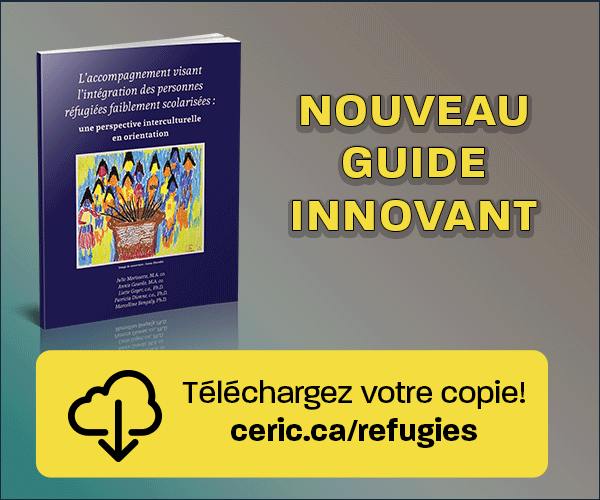Tracer le parcours de transition vers le monde du travail des praticiens des ressources humaines de la génération Y
Mots-clés :
génération y, lieu de travail, transition, les ressources humaines, praticiensRésumé
The purpose of this paper is to present results from a study exploring experiences of Generation-Y Human Resources practitioners as they transition from academia to the workplace. Research findings are from on-line surveys, and individual and focus group interviews with 221 college graduates, 170 supervisors of these workforce entrants, and 42 educators. Emergent from data analysis is a prevailing disconnect between new recruit expectations and organizational realities. Revealed is a need for a more streamlined transition to move new recruits into the workforce in the following areas: assigned workload, strategic accountabilities, establishing internal networks, office politics, mentoring, and conflict management.
Proposed is a template for fostering academic-business partnerships that capitalize on learning for and from the workplace to ensure premier experiences are delivered to steer new recruits into the HR profession. This enables new recruits to excel in their career aspirations; and gives business leaders the edge in creating work environments that appeal to the new wave of HR practitioners, hence improving ability to recruit and retain them in a shrinking labour market. With a high premium placed on transition management new recruits enter the workforce with a full complement of competencies to advance and perpetuate organizational prosperity.
Références
Batt, R. (2002). Managing customer service: HR practices, quit rates, and sales growth. Academy of Management Journal, 2002, Vol. 45, p. 587-597.
Barrett, C. (2005). Performance and potential 2005-06: Trends reshaping our future. Conference Board of Canada. 1-5.
Carey, R. (2003). Fight the brain drain. Successful Meetings. 52(2), 31-35.
Chamaz, K. (2000). Grounded theory: Objectivist and constructivist methods. In N.K. Denzin & Y.S. Lincoln (Eds.). Handbook of Qualitative Research (pp. 509-535). Thousand Oaks, Sage.
Conference Board of Canada. (2006). Executive Action: Women Leaders of Leadership. Much to Laud, Much to Lament. June 2006, 1-5.
Conference Board of Canada. (2006). Executive Action: Too Few People, Too Little Time. The Employer Challenge of an Aging Workforce. July 2006, 1-5.
Drake Beam Morin. (2003). DBM survey finds companies have not prepared younger workers for Senior leadership roles. May, 2003.
Folger, R. and Cropanzano, R. (1998). Organizational Justice and Human Resources Management. CA: Sage Publications.
Harter, J., Schmidt, F., and Hayes, T. (2002). Business unit relationships between employee satisfaction, employee engagement, and business outcomes. Journal of Applied Psychology, 2002, Vol. 87, p. 268-279.
Hastings, R. (2008). Millennials expect a lot from leaders. HR Magazine. 53(1), 30.
Hira, N. (2007). You raised them, now manage them. Fortune. 155(9), 38- 48.
Holloway, I. & Todres, L. (2003). The status of method: Flexibility, consistency, and coherence. Qualitative Research. 3(3), 345-357.
Hunt, J. & Weintraub, J. (2002). The Coaching Manager: Developing Top Talent in Business. San Francisco, CA: Sage Publications.
Izzo, J. (2002). Values Shift: The New Work Ethic and What it Means for Business. Toronto: Prentice Hall Canada.
Kaye, B. & Jordan-Evans, S. (2005). Love ‘Em or Lose “Em. Barrett Koehler Publishers.
Kofman, B., and Eckler, K. (2005). They are your future: Attracting and retaining Generation Y. Canadian HR Reporter, April 2005, p. 7.
Lancaster, L.C & Stillman, D. (2002). When Generations Collide: Who they are, Why they clash, and How to solve the generational puzzle at work. New York: Harper.
Leibowitz, Z., Schlossberg, N., and Shore, J. (1991). Stopping the revolving door. Training and Development Journal, Feb. 1991, Vol. 45, #2, p. 43-50.
Loughlin, C. & Barling, J. (2001). Young workers’ work values, attitudes, and behaviors. Journal of Occupational and Organizational Psychology. (74), 543-558.
Martin, C. (2005). From high maintenance to high productivity: What managers need to know about Generation Y. Industrial and Commercial Training. 37(1) 39-44.
Martin, C. & Tulgan, B. (2002). Managing the Generation Mix. New York: HRD Press.
McClintock, J. (2003). Leadership development crisis looms as boomers retire, firm reports. Knight Ridder/ Tribune Business News.
McIntyre, G. (2007). Rising to the challenge. Canadian Investment
Guide. 12, 5-8. Mercer, M. (2002). Turning Your HR Department into a Profit Centre. Illinois: Castlegate Publishers.
Nyce, S. & Schieber, S. (2002). Decade of the employee: Workforce challenges facing developed economics of the world over the next ten years. Retrieved from
http://www.watsonwyatt.com/surveys/hci.
Rekar Munro, C. (2007). Work-life harmony practices of HR practitioners: Leading by example or in search of an example. HR Professional, Oct. 2007, Vol 25, #5.
Rekar Munro, C., and Laiken, M. (2004). Developing and sustaining high performance teams: Managing difference through an action research approach. OD Practitioner, Winter 2004, Vol. 36, #1, p. 3 – 8.
Saratoga Institute (2002). Human Capital Benchmarking Report. CA: Santa Clara. p. 73.
Statistics Canada (2007). Profile of Canadian population by age and sex: Canada ages. Statistics Canada Catalogue, #96F0030XIE2005006. Ottawa, July 16. Analysis Series, 2006 Census.
Sullivan, S. (1999). The changing nature of careers. Journal of Management, 1999, Vol. 25, #3, p. 457-484.
Weber, R. (2008). Managing Generation Y. Trailer/ Body Builders. 50- 54.
Wolburg, J. and Pokrywczynski, R. (2001). A psychographic analysis of Generation Y college students. Journal of Advertising Research, Sept/Oct. 2001, Vol. 41, #5, p. 33-52.
Yeaton, K. (2007). Recruiting and managing the “why” generation: Gen Y. The CPA Journal. 78(4), 68-72.
Zemke, R. (2001). Here come the millenials. Training. 38(7), 44-49.
Zemke, R., Raines, C., & Filipczak, B. (2000). Generations at Work: Managing the clash of Veterans, Boomers, Xers, and Nexters in your workplace. Washington, DC: American Management Association.

Téléchargements
Publié-e
Comment citer
Numéro
Rubrique
Licence

Cette œuvre est sous licence Creative Commons Attribution - Pas d'Utilisation Commerciale - Pas de Modification 4.0 International.











